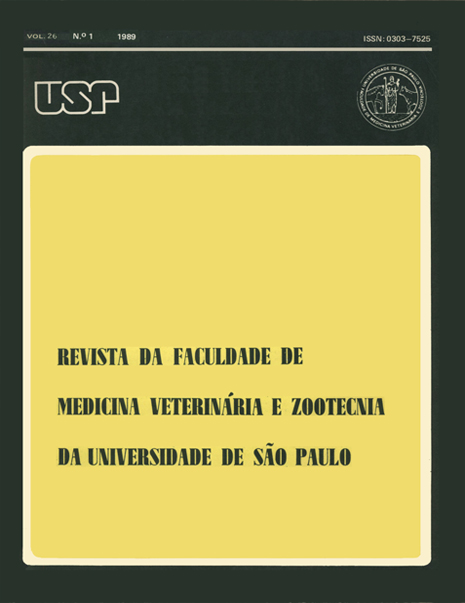Macroscopic tuberculous lesion as a diagnostic criterium of mycobacterial infection in slaughtered swine carcasses
DOI:
https://doi.org/10.11606/issn.2318-3659.v26i1p21-33Keywords:
Swine, Post-mortem examination, Meat inspection, Mycobacterial infectionsAbstract
In order to assess the adequacy of the use of the macroscopic examination of tuberculous lesions, performed routinely by the Meat Inspection Service, as the diagnostic criterium for the detection of mycobacterial infection in swine carcasses at slaughter houses, the results of macroscopic examination of lymphnodes were compared to that of histopathologic and bacterioIogic ones. The mesenteric lymphnodes were taken from two separated groups of pigs presented at slaughtering, group "A" was represented by 30 animals with macroscopic tuberculous lesions detectable at the examination of the mesenteric lymphnodes, and group "B", constituted by the same number of individuals without any macroscopicaIIy detectable lesion in their lymphnodes. The microscopic granulomatous lesions were found in all 30 samples taken from animals of the group “A“, and 20 (20/30) isolates from this group were further recognized as MAI (90.0%), MAIS (5.0%) and M. terrae (5.0%) complexes. By means of histopathologic examination of specimens taken from the group ”B", microscopic granulomatous lesions were observed in four (4/30) samples and eight (8/30) were positive for isolation of mycobacteria, further classified as MAI (87.5%) and M. terrae (12.5%) complexes. In this group, positive coincidental results between histopathologic and bacterioIogic examinations were found in two occasions only. Positive cultures for mycobacteria were found in six samples that had nort shown any microscopic alterations. The statistical analysis, using the binomial test, has revealed no statistical difference (significance level = 0.05) between the positive results found for the three procedures (macroscopic, histopathoIogic and bacterioIogic examinations).Downloads
Download data is not yet available.
Downloads
Published
1989-03-15
Issue
Section
PREVENTIVE VETERINARY MEDICINE
How to Cite
Macroscopic tuberculous lesion as a diagnostic criterium of mycobacterial infection in slaughtered swine carcasses. (1989). Revista Da Faculdade De Medicina Veterinária E Zootecnia Da Universidade De São Paulo, 26(1), 21-33. https://doi.org/10.11606/issn.2318-3659.v26i1p21-33


